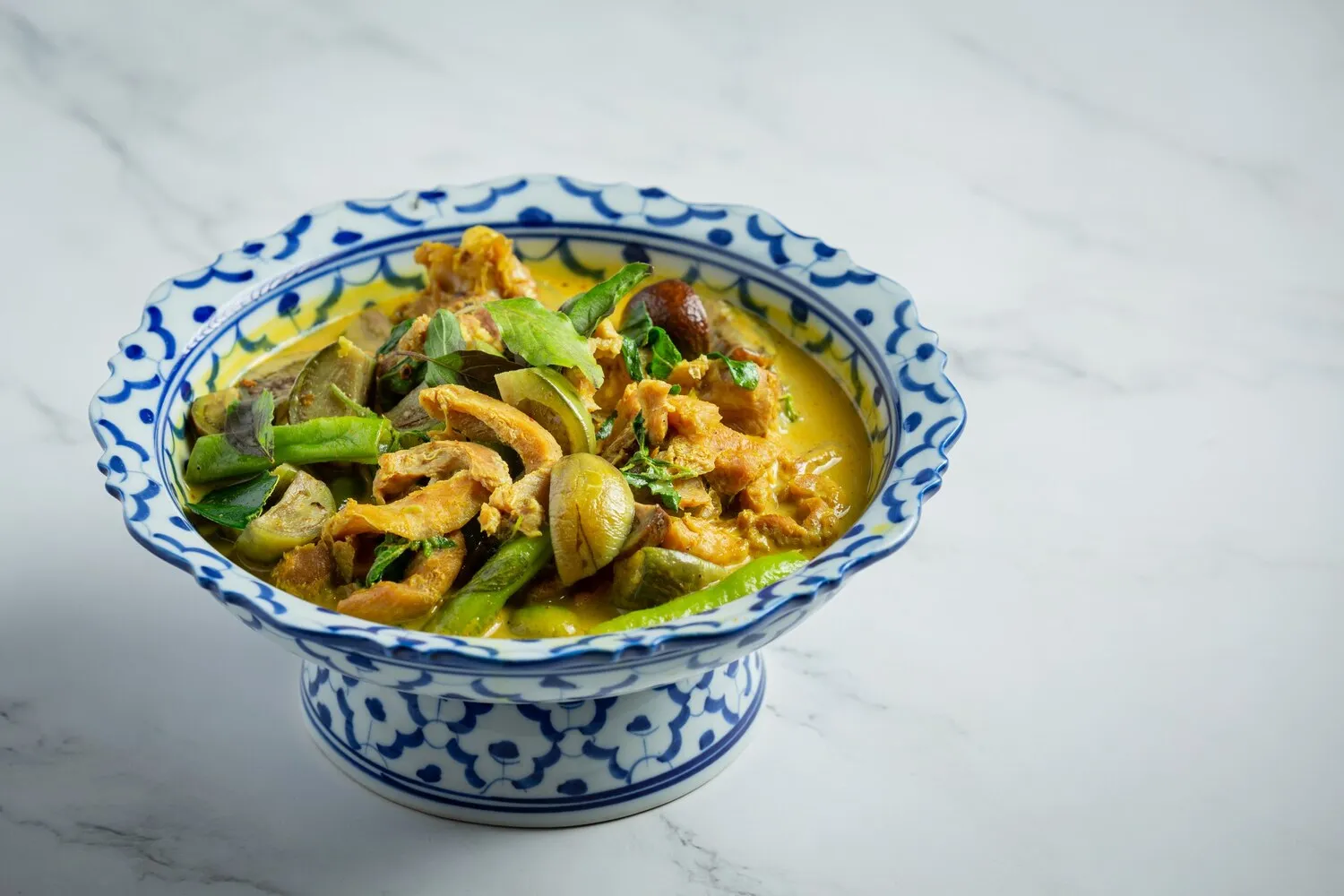
Red Curry
Thai red curry with coconut milk, bamboo shoots, bell peppers, and basil.
Nutrition Facts
* The % Daily Value (DV) tells you how much a nutrient in a serving of food contributes to a daily diet. 2,000 calories a day is used for general nutrition advice.
White Elephant Thai Cuisine at Chestermere Station
Thai curry's history is intertwined with the spice trade and culinary influences from India and neighboring Southeast Asian countries. While the exact origins are difficult to pinpoint, the use of chilies, a key ingredient in red curry, arrived in Thailand with Portuguese traders in the 16th century. Coconut milk, abundant in Thailand, became a defining element, distinguishing Thai curries from their Indian counterparts.
Red curry is a staple of Thai cuisine, often enjoyed as a comforting and flavorful meal in homes and restaurants alike. It reflects Thailand's rich agricultural heritage and its tradition of using fresh, locally sourced ingredients.
Family Style Dining
Thai meals are often eaten family-style, with multiple dishes shared among everyone at the table, including red curry. This promotes a sense of community and shared experience.
Curry's Role in Festivals
While not exclusively a festival food, red curry can be a part of festive meals and celebrations, showcasing the abundance and flavors of Thai cuisine.
Regional Variations
Although popular throughout Thailand, local and regional variations exist, reflecting the availability of specific ingredients and unique culinary traditions.
Red Curry is characterized by its rich, creamy, and moderately spicy flavor profile. The interplay of sweet coconut milk, savory fish sauce, and aromatic spices creates a complex and satisfying taste.
The dominant flavors are heat from the red chilies in the curry paste, sweetness from coconut milk, savory notes from fish sauce (nam pla) and shrimp paste (kapi), and aromatic complexity from ingredients like galangal, lemongrass, kaffir lime leaves, and coriander seeds. Bamboo shoots contribute a slightly bitter and crunchy texture, bell peppers add sweetness and color, and fresh basil provides a fragrant, anise-like finish.
Making or Buying Curry Paste
While store-bought red curry paste is convenient, making your own from scratch allows for greater control over the flavor and spice level. Using fresh, high-quality ingredients is key.
Coconut Milk Quality
Full-fat coconut milk is crucial for the rich and creamy texture of red curry. Avoid using 'lite' or low-fat versions, as they will not provide the same depth of flavor.
Balancing Flavors
Taste and adjust the curry throughout the cooking process. Balance the sweetness, spiciness, and saltiness to your preference by adding sugar, chilies, or fish sauce as needed. Start with less spice and add more to your liking.
Explore additional Curry dishes and restaurants
Explore CurryDiscover top dining spots and culinary experiences in Chestermere.
Explore ChestermereLearn more about the food culture, restaurant scene, and culinary heritage of Canada.
Explore Canada